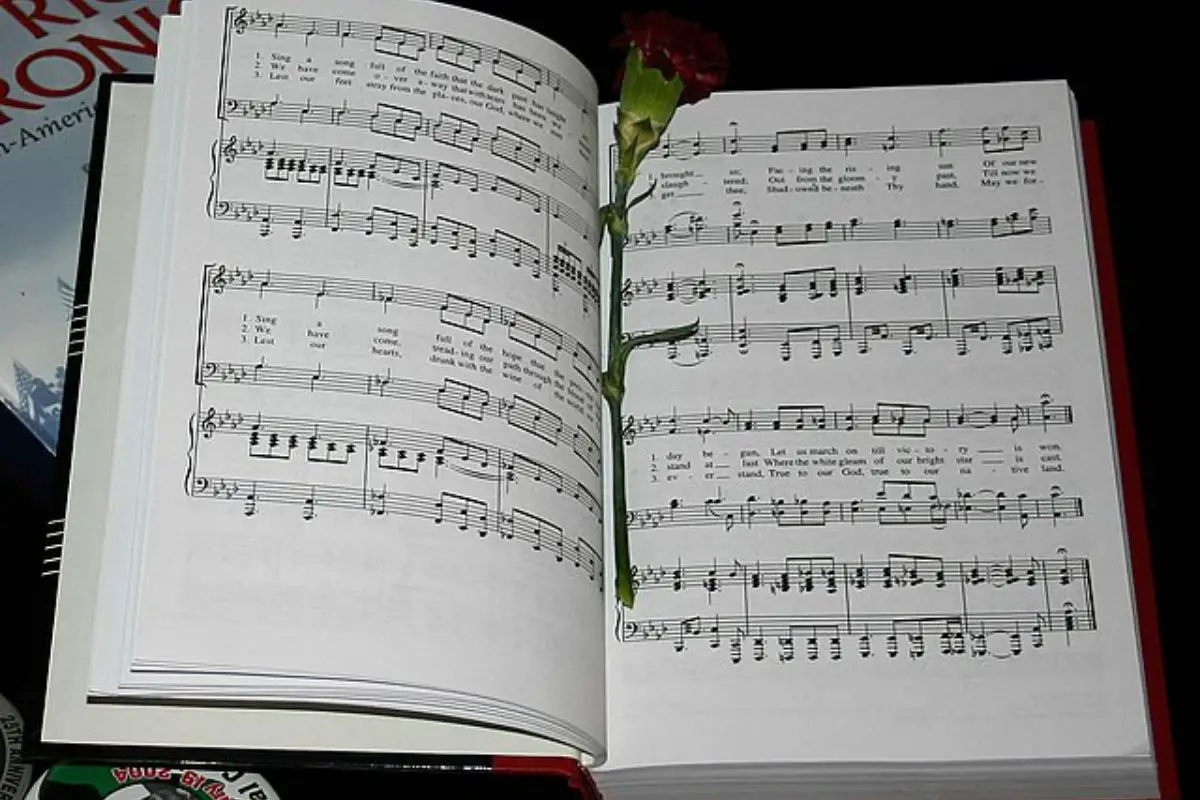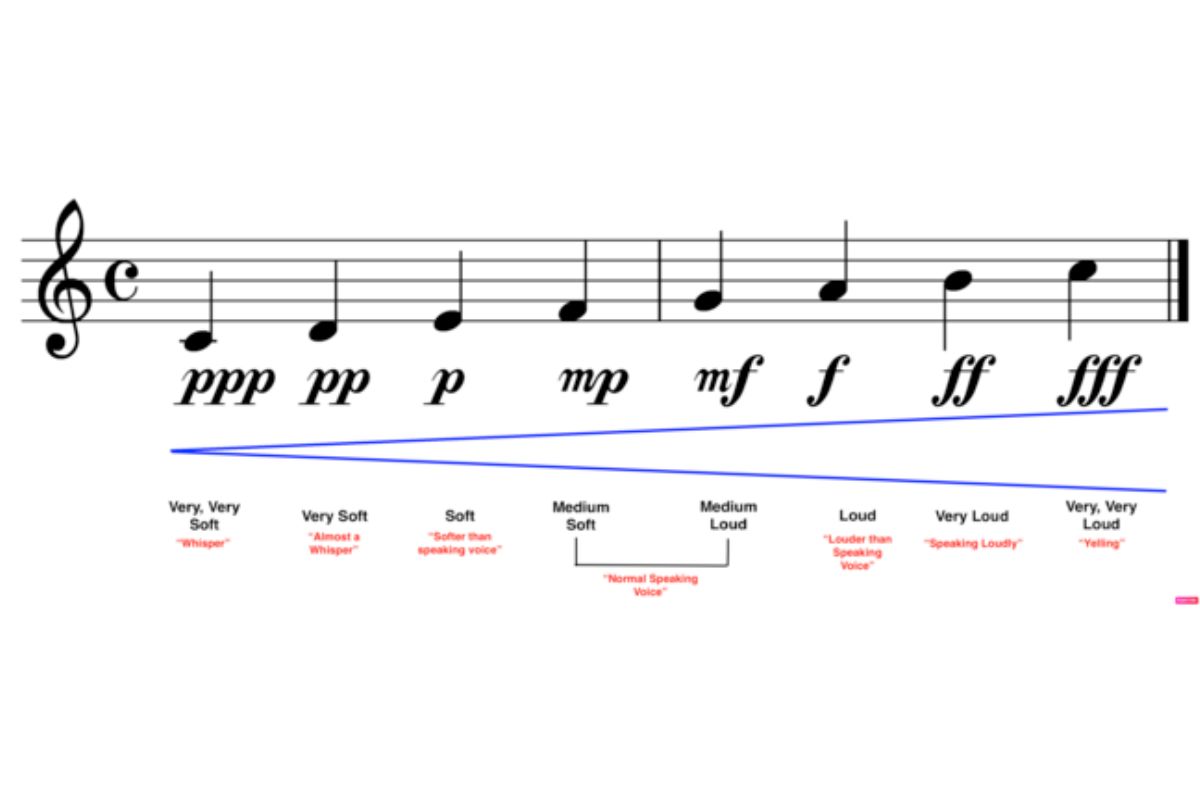Ever found yourself vibing to a piece of music, and it suddenly dips into a whisper-soft melody that hits so differently? That’s the magic of pianissimo, my friends! Got an idea why it does that?
What does Pianissimo mean? When a musician’s forté (see what I did there?) is playing super soft, you’re feeling the pianissimo effect. It’s more than just playing softly; it’s about hitting the keys delicately that it’s softer than a ‘piano’ but not quite the whisper of a ‘pianississimo.’ Crazy, right?
How does one play pianissimo on a musical instrument?
Pianissimo, if I have to put it plain and simple, is all about finesse, control, and touch. You’re going for a notch above muffled volume and a step below ‘piano.’ It’s not exactly about applying less force but more about transferring less energy into the instrument. When playing pianissimo, your fingers have to be gentle on the keys, like brushing off dust from a record.

AKAI Professional MPK Mini MK3

AKAI Professional MPK Mini MK3
How is pianissimo indicated in sheet music?
Pianissimo is symbolized by ‘pp’ in sheet music. Just like speed limits are there to tell you how fast you’re allowed to go, dynamic markings in music inform you how loud or soft to play.
Yet, don’t confuse it for ‘piano’, which is indicated by a single ‘p’ and is merely “soft”. And then there’s ‘pianississimo,’ marked ‘ppp,’ meaning “very, very soft.”
To sum it up:
- Pianissimo (pp) – Very soft
- Piano (p) – Soft
- Pianississimo (ppp) – Very, very soft
Music isn’t just black and white. It’s shades of grey, or rather, shades of volume! A pianissimo might seem like the softest you can go, but then you discover pianississimo, and it’s like, “whoa, that’s softer than a whisper track.”
What part does pianissimo play in a song’s dynamics?
Simply put, pianissimo is the unsung hero that brings charisma to the song’s dynamics. It’s a stage whisper softer than ‘piano’ but not as silent as ‘pianississimo.’ You see, dynamics deal with relative changes in volume and not absolute decibel levels. So, pianissimo isn’t a set volume but rather a level of softness that depends on the song’s overall average volume.
Does pianissimo affect the overall sound dynamics?
Yeah, it does! Music has dynamic layers too! Pianissimo is like that unexpected soft layer that adds depth and drama to the song’s dynamics. While the exact decibel levels may vary, it’s generally softer than the average volume of the piece.
Mastering the use of dynamics, especially softer elements like pianissimo can significantly improve the quality of your tracks.
For all the budding producers and music nerds out there, mastering the use of dynamics, especially softer elements like pianissimo can significantly improve the quality of your tracks. When you’re creating a mix, imagine it like a 3D soundscape. Adding some pianissimo elements can add depth and a sense of space, helping your track feel more alive and less, well, flat.
Here’s a handy dos and don’ts table for all my friends starting in music production:
| Do’s | Do’s |
|---|---|
| Use dynamics smartly | Overuse any dynamic, including pianissimo |
| Experiment with different dynamic levels | Ignore the importance of dynamics in your mix |
| Understand each dynamic marking | Confuse pianissimo (pp) with piano (p) or pianississimo (ppp) |
How does pianissimo compare to fortissimo?
After all this talk of softness, you might be surprised there’s something quite opposite to pianissimo, and that’s fortissimo. They’re polar extremes. If pianissimo is the definition of soft, fortissimo is like blasting your music on max volume. It’s marked as ‘ff’ and is hella loud — even louder than ‘forte.’ So, if pianissimo is like gently falling rain, fortissimo is more akin to a thunderstorm.
Is pianissimo only for piano?
Although the term may have roots in piano, pianissimo can be applied to any instrument and even vocals. It’s an instruction to play a passage softly, irrespective of your instrument. So whether you’re strumming a guitar, blowing a trumpet, or hitting a drum, you can always add a pianissimo touch to your music.
Music isn’t just about the notes; it’s about the spaces in between. Whether it’s an 808 beat that slaps or elusively soft pianissimo moments, these contrasts make music so vibrant.

What does ‘pianissimo’ mean in music dynamics?
Before we dive into the pros and cons of employing pianissimo in your music production, let’s break down this musical term further with a data table. This will help illustrate just how pianissimo stacks up against other dynamics in music.
| Dynamic Marking | Meaning | Symbol | Pronounced |
|---|---|---|---|
| Pianississimo | Very, very soft | ppp | pee’-an-EE-see-see-moh |
| Pianissimo | Very soft | pp | pee’-an-EE-see-moh |
| Piano | Soft | p | pee’-an-oh |
| Mezzo Piano | Medium soft | mp | met-soh pee’-an-oh |
| Mezzo Forte | Medium loud | mf | met-soh for-teh |
| Forte | Loud | f | for-teh |
| Fortissimo | Very loud | ff | for-tee-see-moh |
| Fortississimo | Very, very loud | fff | for-tee-see-see-moh |
What are the advantages and disadvantages of using pianissimo in music production?
So you’re now well versed with what pianissimo is and how it’s used in sheet music. But like everything in life, using pianissimo in your music production has its perks and quirks. Let’s get into them:
Advantages
- Brings depth and variation: Pianissimo can bring a certain depth and variation to your music, setting your track apart from monotonous mixes.
- Creates emotional impact: Using pianissimo can create a significant emotional impact. It grabs attention due to its contrast with louder parts.
Disadvantages
- Difficult to achieve: Mastering the delicacy required for an effective pianissimo can be challenging. It requires a lot of practice and control.
- Risk of being lost in the mix: In a robust mix, a pianissimo part may be lost or perceived as silence, especially if there’s a lot going on in your track.
There you have it! While pianissimo might look like music-genius jargon, it’s pretty much an open secret to making your tracks sound sick! Just let the dynamics do their magic.
If you want even more great tips and information, check out the video.
Frequently asked questions (FAQ)
In this section, we’ll tackle a few more questions about pianissimo that you might still have. These are questions that often come up, and I thought it would be great to share them here for everyone.
Can pianissimo be used in all genres of music?
Absolutely, yes! Pianissimo isn’t genre-specific. It’s an effective tool that can be employed in all genres of music to bring depth, drama, and contrast to a piece, from classical symphonies to jazzy improvisations to hip-hop beats.
Can pianissimo be used in digital music production?
In the digital realm, pianissimo can be achieved via careful use of the volume level envelope or velocity adjustments in MIDI programming. It can be a beneficial approach to introduce more dynamics and depth into your computer-generated tracks.
How often is pianissimo used in music production?
The usage of pianissimo really depends on the piece and the emotion the composer wants to evoke. Some pieces might have a lot of dynamic changes, including several instances of pianissimo, while others might employ it sparingly to create a startling contrast.
Conclusion
Well, folks, that’s it for our pianissimo talk. I’m sure you’re now eager to explore this softer side of music dynamics! So next time, instead of dropping the bass, how about dropping some pianissimo instead? It’s quieter, but trust me, it’ll still make some noise. Speaking of noise, do you feel like I hit the right key here? Did I cover everything you wanted to know? Let me know in the comment section below (I read and reply to every comment). Until next time, keep hitting those keys, whether it’s forte, piano, or, you guessed it, pianissimo!
Key takeaways
Let’s do a quick recap. This article covered what pianissimo is and how it’s used in music. Here are some key takeaways:
- Pianissimo, marked ‘pp’ in sheet music, means to play very softly.
- It’s softer than piano (p) but quieter than pianississimo (ppp).
- Pianissimo adds depth and variety to a music piece, emphasizing contrast and evoking emotion.
- Pianissimo can be achieved on any instrument, not just on the piano.
- Understanding and utilizing pianissimo effectively can significantly improve your music production.















